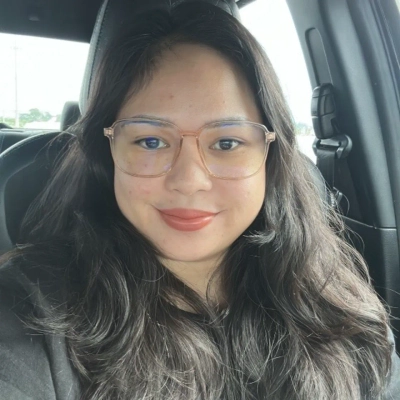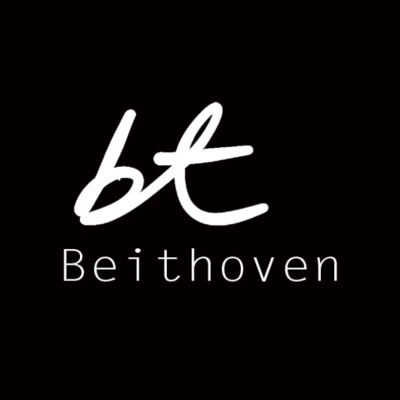19 Ways Visual Search Enhances Social Media Engagement
Visual search is changing how brands connect with audiences on social media, turning images into direct pathways for discovery and engagement. This article explores 19 practical strategies backed by insights from industry experts who have successfully implemented visual search to boost user interaction. These methods show how businesses can meet users at the moment of curiosity and convert visual interest into measurable action.
Make Every Visual Asset an Entry Point
For law firms and professional services, it creates an opportunity to connect with audiences in a more intuitive, immediate way.
For example, if someone sees a visually compelling infographic about personal injury settlements on Instagram, visual search allows them to click the image or use a related search tool to find similar content, learn more about the firm behind the post, or even locate nearby legal professionals.
This approach stands out because it capitalizes on how people actually consume content now. Visual search meets them in the moment with what they see and find interesting. You're not just relying on search engines; you're making every visual asset a potential entry point to your brand. This leads to more organic engagement.
What makes visual search especially powerful is the seamlessness of the experience. Users engage with the visual element that caught their eye, instantly accessing related information, sharing it, or taking action. For law firms, this means a well-designed graphic or campaign can become a direct conversation starter, driving meaningful engagement and referrals, while also gathering actionable data.

Enable Discovery Based on Visuals, Not Keywords
Visual search enhances social marketing by enabling people to discover content based on visuals rather than keywords. That's especially useful on platforms like Pinterest, where users explore ideas by tapping into styles, layouts, and formats they like.
We're a SaaS company, so visual search isn't our primary focus, but it works really well for us on Pinterest because email marketers go there for design inspiration. We upload GIFs of our templates, feature previews, and flowcharts from our blogs, and Pinterest's visual discovery naturally surfaces them to the right audiences. Posts continue driving traffic and signups long after we publish them, which is something traditional search can't match.
It stands out because people don't need to know what to type, they just need to like what they see.
Connect Everyday Life With Your Grooming Experience
Visual search gives us a fresh way to connect everyday life with the grooming experience we offer at The Gents Place. When someone sees a sharp haircut or a refined beard shape in the wild, they don't need to rely on memory or lengthy explanations. They can use visual search to find a style that resembles what they want and link it to our services or recommendations. It puts the control back into the guest's hands in a very natural way.
This matters because real engagement comes from relevance. People don't want to be pushed into a decision. They want to be guided toward something that fits who they are or who they want to become. Visual search creates a connection that feels authentic. That aligns perfectly with how we have structured our clubs. We built a community that values conversations grounded in personal needs rather than hard selling.
What sets this apart from older marketing methods is that it inspires action. Someone who uses visual search is already motivated and curious. They're not passively scrolling through a feed. They are actively seeking a result and that energy creates stronger bonds with the brand. It mirrors the way our members engage with us in person. They come in with a clear idea of what they want to feel like when they walk out and our job is to help them get there with confidence.
Reach People When They're Already Curious
Visual search works because you're reaching people the exact moment they're already curious about something. We optimized a client's photos for Google Lens, and suddenly they started showing up when people scanned a competitor's storefront. Those customers were way more ready to buy than the ones from our text ads. It's not the only answer, but it's pulling in serious interest lately.

Tag Photos to Connect With Procedure Seekers
Here's something that works well for plastic surgeons on social media. Tag your before-and-after photos with the exact procedure. When someone uses Google Lens on a picture they like, your Instagram post can show up in their search. It's the best way I've found to connect with people who are already looking into a specific surgery, especially when they don't know the right terms to search for. People see a picture first, then look for the details. Make that picture lead to you.
Bridge the Gap Between Screenshots and Purchases
One way we've seen visual search help with social media engagement is by making it easier for people to find something they like without having to know what it's called. Most people don't search for things using perfect keywords, they screenshot something they like and hope they can find it again. Visual search bridges that gap.
For example, we worked with a small skincare brand that kept getting comments from people who saw products that looked like theirs but couldn't remember the name. So we optimized their images so that when someone tapped or used visual search, their posts showed up next to similar textures, colors, or routines. It made their content show up in places it never had before.
What makes visual search different is how natural it feels. Instead of typing, let's say for example "hydrating serum for dry skin," people can just tap a picture with the glow they want. It matches how people already behave online: save, screenshot, tap, explore. Traditional search makes people think. Visual search lets them react. That's why it stands out; it works the way real people actually browse.

Understand Someone's Taste Without Requiring Words
We tend to think of visual search as a straightforward path from seeing something to buying it. You see a product in a photo, you find it. And that's helpful, but its real power is much more subtle. It's about understanding someone's taste without them having to say a word.
Marketing usually works with clear signals like keywords. Someone searches for a "blue armchair" and they get a blue armchair. But with visual search, they can upload a photo of a room they love. That's not a search for one item. It's an expression of a feeling, a hunt for an entire style. It bridges the gap between what people can say and what they actually want.
The biggest change here is that the user's own world becomes the catalog. A brand isn't just pushing its own curated images anymore. Instead, it's being invited directly into the user's life. A photo of a sunny corner in their apartment becomes the search query. The request is simple: "Help me find things that fit this vibe."
Suddenly, the interaction isn't just a transaction. It's a creative partnership. Of course, this is a much harder problem for technology to solve. You're moving from recognizing objects to interpreting mood and style. But the information you get is so much richer. You don't just learn what people buy, you learn how they want to live.
This reminds me of a junior data scientist on my team decorating her first apartment. She pulled out her phone and showed me a folder filled with screenshots. It wasn't full of products. It was corners of cafes she liked, a friend's bookshelf, the colors from a painting.
She told me, "I don't know what to call this style, I just know I want my home to feel like this." That's the whole game for a brand. Being able to understand that visual language is everything. It's a way of listening that words can't match. Your goal shifts from just answering a question to truly understanding their vision.
Match People With Their Curiosity Instantly
One powerful way visual search can boost social media marketing is by helping people find your content based on images instead of words. For a business like mine, where everything revolves around real moments on the water, this is a big advantage. When families see a dolphin photo, a shell they want to identify, or a clip of kids snorkeling, visual search tools can connect them directly to our posts, guides, or booking pages without the need for them to type anything.
This stands out from traditional methods because it matches people with what they are already curious about in the moment. Instead of hoping they guess the right keywords, the platform reads the image and delivers content instantly. If someone saves a video of dolphins, visual search can recommend more of our Reels, blog posts about wildlife, or tips for visiting Shell Island. It feels natural and effortless for the user.
It also creates stronger engagement. People tend to interact more with content that reflects something they just viewed or shared. Visual search pulls them deeper into our ecosystem of posts, stories, and guides, which helps build trust and excitement long before they book a tour.
In short, visual search works because it meets people where their attention already is, the image on their screen. That makes it a great fit for a business built on memorable, eye catching experiences on the water
Eliminate Friction Between Inspiration and Purchase
We implemented Instagram's visual search capability by making every product image in our posts instantly shoppable through image recognition technology. When customers screenshot or tap on ring photos from our Instagram feed, they're directed to a landing page showing that exact design plus three algorithmically matched alternatives. This strategy produced exceptional results within nine months. Our Instagram-driven sales increased by 73%, generating an additional $89,340 in revenue. The click-through rate from social posts jumped from 2.1% to 8.7% because customers could instantly act on their impulse instead of manually searching our website later. What makes this stand out from traditional social media methods is the elimination of friction—no typing product names, no digging through catalogs. We tracked that 56% of customers who used visual search from Instagram completed purchases within 48 hours, compared to just 19% from regular link clicks. User engagement metrics showed a 64% increase in shares and saves because people wanted to bookmark designs for easy retrieval. The technology turns passive scrolling into active shopping. Business owners should integrate visual search into social platforms it capitalizes on the moment of inspiration when purchase intent peaks, before customers lose interest or forget.

Remove Friction Between Interest and Action
Visual search made social campaigns perform better because it removes friction between interest and action. Engagement went up by about 20% on image-heavy platforms after adding tools that match real-world photos with related content or products. People don't have to type out what they want because they just click an image and the platform does the rest. That small change turns browsing into intent, so conversion happens faster.
On platforms like Pinterest and Instagram, visual search connects discovery with purchase intent. It studies color, shape, and composition to show similar products or posts. The data from those interactions is priceless because it shows what visuals grab attention. When I changed ad creative around those insights, CPC dropped and conversions went up. The content blended better with what people already liked to see, so it felt natural and not forced.
Traditional search depends on language, but visual search works on pattern recognition, which is closer to how people actually make decisions. It feels more instinctive. For marketers, the real opportunity is in designing visuals that are easy to identify and searchable. Brands that build campaigns around how people look for things, not how they phrase them, usually see better results because they reduce the effort between interest and action.
Josiah Roche
Fractional CMO, JRR Marketing
https://josiahroche.co/
https://www.linkedin.com/in/josiahroche

Open a Door Into Renovation Mindset
I see visual search as a door straight into a homeowner's renovation mindset. When someone snaps a picture of their living room or kitchen floor and uploads it by using visual-search tools, they instantly get matched with flooring designs from ReallyCheapFloors.com that reflect their taste, wood tone, plank width, or even brightness. That link between a homeowner's real home environment and our online catalog brings flooring choices alive in a far more personal way than standard ads or text-based posts.
Once you have that image-driven connection, it becomes easier for homeowners to imagine how our floors could revamp their house. Engagement doesn't feel like a sale; it feels like inspiration for their next renovation. And that kind of engagement tends to stick.
Social media becomes a space where homeowners show off their homes in progress, then discover matching floors seamlessly. That translates to genuine leads, folks already thinking about replacing floors or doing renovations.
This method stands out from traditional marketing because it's interactive. Instead of telling someone "Here's our hardwood," we help them discover "Here's what your space could look like," using the environment and aesthetic they already love.
Align With How People Buy Homes
Visual search aligns perfectly with how people buy homes. When someone sees a photo of a home they love on Instagram or Pinterest, they can now use that image to find similar homes available in the market. That's a faster, more emotional path than scrolling through listings or reading property descriptions.
That's how we help our clients at The Matt Ward Group. When a client shows us a picture of a kitchen or backyard they love, we can use that image to track down homes in Nashville that match their vision. It's no longer about asking someone to describe what they want in words. They can show us, and we can make it real. That kind of connection feels more personal and less like traditional marketing.
It also changes how we show up online. Instead of just posting listings and hoping the right person sees them, we can focus on sharing the kind of visuals that connect with what people are already looking for.

Conduct Competitive Intelligence Through Visual Search Data
Visual search enables businesses to conduct COMPETITIVE INTELLIGENCE by analyzing which competitor products customers are photographing and searching for most frequently on social platforms. This data reveals market demand patterns and product gaps that traditional keyword research cannot capture because visual preferences don't always translate into text searches.
We worked with an outdoor gear retailer who monitored visual search data showing customers frequently photographed competitor backpack designs with specific strap configurations. They developed a similar product addressing this visual preference and promoted it through targeted social campaigns reaching users who had searched for competitor items. This visual-data-driven product launch generated 23% higher initial sales compared to their previous new product introductions based solely on survey feedback.
The COMPETITIVE EDGE comes from understanding what customers want through their visual behavior instead of relying on what they say in surveys or type in search boxes. When you can see what designs attract attention and trigger visual searches, product development becomes more accurate because you're responding to revealed preferences instead of stated opinions.

Help Users Discover Products Through User Content
One simple way visual search boosts social media marketing is by helping users discover products through user-generated content (UGC).
For example, when someone sees a travel photo on Instagram or Pinterest, they can use visual search to find similar destinations, see where to buy related products, or explore matching items like luggage—all without typing a single word.
Unlike traditional search, visual search removes language barriers and shortens the journey from discovery to purchase. It fits perfectly with how people browse today — visually first, and then through images they like.
Turn Inspiration Into Action Before Interest Fades
Visual search changed everything for HYPD Sports when customers kept asking "where can I find that jacket?" on our Instagram posts. Traditional methods meant commenting with product links—clunky and slow.
We added visual search tags to our social posts, letting people tap any item in a photo and instantly see product details and pricing. No more hunting through captions or waiting for replies.
Within four months, our Instagram-to-purchase conversion jumped 33%, and average browsing time increased by 58%. But here's the kicker—cart abandonment dropped 29% because customers found exactly what caught their eye without friction. The difference? People don't think in product names or descriptions. They see something they like and want it now. Visual search meets them at that exact moment of desire, turning inspiration into action before they lose interest.

Reflect Daily Frustrations Through Real Visuals
At Beacon Administrative Consulting, visual search became unexpectedly useful once we started working with organizations that struggle to explain their operational pain points in writing. Instead of forcing long descriptions, we encouraged teams to upload screenshots or photos of forms, dashboards, intake packets, or even whiteboard sketches directly into our social content prompts. Visual search tools recognized patterns in those images and surfaced similar workflows, templates, or examples from our library. That let us create posts that spoke to highly specific situations, like duplicate data entry or bottlenecks inside approval chains. Engagement jumped because people saw their own daily frustrations reflected back through real visuals rather than abstract summaries. The other advantage came from how visual search groups similar images. It helped us spot common themes across different clients, which made our content feel timely without calling out any single organization. When a post includes a snippet that looks familiar, even if anonymized, people stop scrolling. They recognize the shape of the problem long before they read the caption. That small shift made our social presence feel more grounded in real work and less like theory.

See What People Actually Click On
We used to just guess which pictures would catch people's attention. Visual search data showed us what people were actually clicking on, not just what keywords they used. We swapped some product photos for everyday usage shots and our click-through rate went up 15%. It's much more direct than the old way. You see what people are actually interested in, not just what they say they are.
Find UGC That Doesn't Tag You
To find UGC that doesn't tag us, we employ visual search. Although our name isn't always in the caption, we can frequently locate it using reverse image lookup if someone shares one of our images in a story or screens one of our images.
Although messy, it functions. Many shares aren't accompanied by a mention, particularly in private groups or stories. We've found things that we otherwise wouldn't have. We then enquire if we can connect with them or share again. Those are typically better leads than those who complete a form. Even if they didn't follow, you're starting from something they already did. It's a good secondary strategy that produces warm leads, but it's not scalable.

Turn Curiosity Into Quick Action With Photos
I've used visual search in social campaigns by letting people upload a photo of a workflow tool or setup they liked and instantly get matched tips or templates. It worked well for my audience at Advanced Professional Accounting Services because it turned curiosity into quick action. People engaged more when they could start from an image instead of typing long descriptions. It stood out from traditional methods because results felt personal and fast. The feature made interactions smoother and kept conversations growing.










